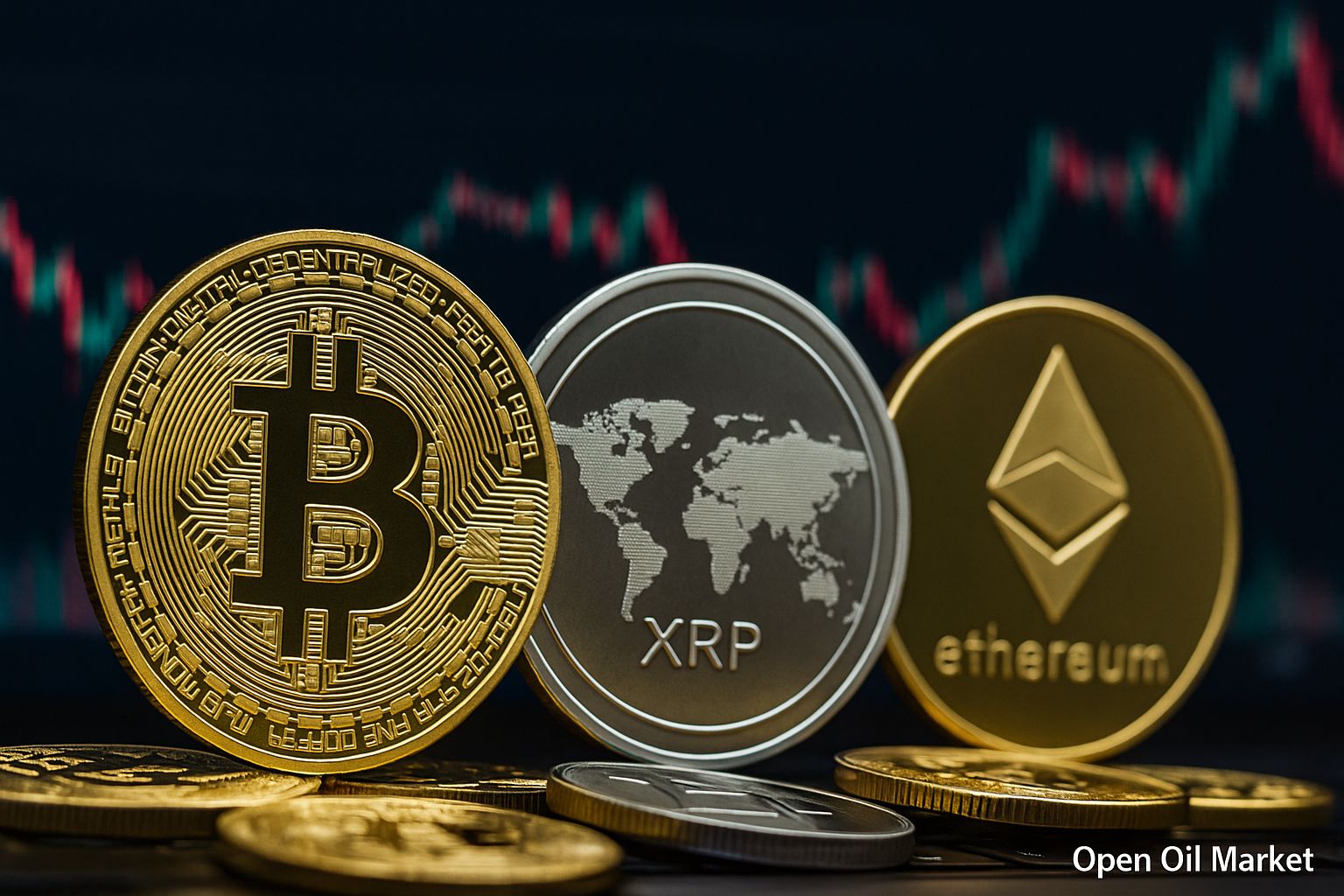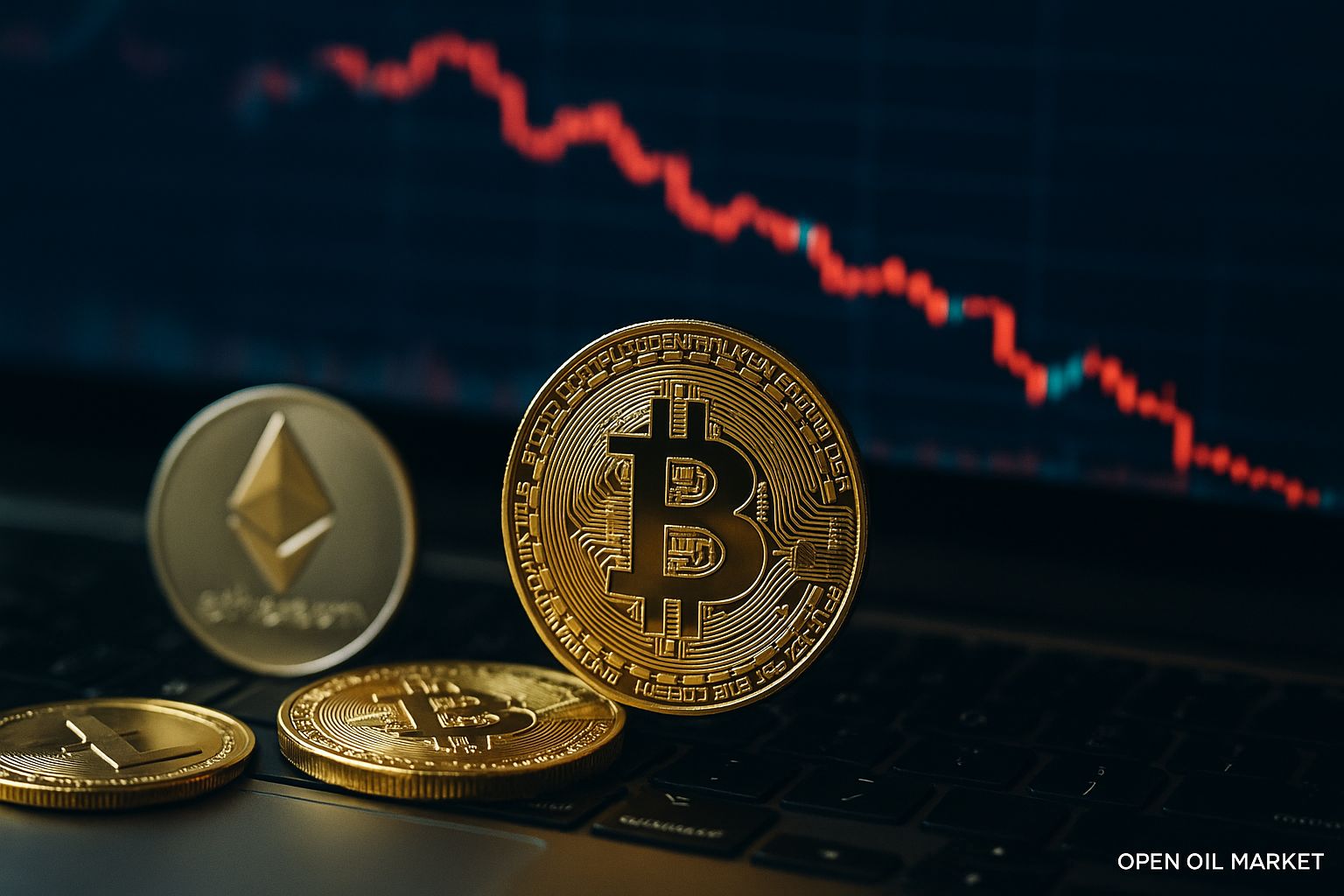
Fresh Cryptocurrency News as of 19 October 2025: Bitcoin and Altcoin Dynamics, Changes in DeFi and NFT Markets, Regulation, Top 10 Coins, and Macroeconomic Context.
Market Overview: A Volatile Week
Following a rapid growth phase at the beginning of the month and the setting of historical highs, digital asset prices experienced a sharp correction. Investors were reallocating risks in response to a combination of market and macroeconomic factors.
Bitcoin: Correction After Historical Highs
Bitcoin (BTC), the flagship cryptocurrency, breached previous records in early October, surging to approximately ~$126,000. However, last week saw the market reverse direction: prices fell by about 15% from their peak. Bitcoin briefly dipped below the $106,000 mark amid a wave of margin position liquidations and a general retreat of investors from riskier assets.
By the end of the week, BTC consolidated near $107–110 thousand, roughly 7–10% below levels seen seven days prior. The fundamental network metrics remain robust: the total hash rate of the Bitcoin network is holding around record levels (over 1000 EH/s), reflecting miner confidence. Some long-term holders capitalised on the price drop to accumulate positions – on-chain data suggests signs of accumulation, even as short-term speculators exited the market.
Ethereum: Network Activity Despite Price Decline
The second-largest cryptocurrency, Ethereum (ETH), mirrored Bitcoin's trajectory. After rising to approximately ~$4,500 in early October, Ethereum's price retreated to about $3,900 by week's end. This week brought an approximate 8–10% decline for ETH; however, fundamental indicators signal ongoing development within the Ethereum ecosystem.
The Ethereum network continues to exhibit high activity: the number of unique active addresses exceeds 600,000 per day. Furthermore, over 35 million ETH (around 30% of the total supply) is currently staked, indicating investor confidence in the Proof-of-Stake mechanism. Ethereum remains foundational for DeFi and NFT platforms.
Altcoins: Widespread Decline and Volatility
Amid the correction of market leaders, other cryptocurrencies were also impacted. Many significant altcoins faced sell-off pressures as investors sought to reduce risks by exiting more volatile assets. Consequently, the total market capitalisation of the cryptocurrency sector has reduced to approximately 3.7 trillion dollars, losing around 12% from early-month peaks.
The capitulation within the altcoin segment was broad. For instance, prices for Solana (SOL) and XRP fell roughly 15% over the week, while tokens like Dogecoin (DOGE) and Cardano (ADA) sank almost 20%. Even relatively resilient tokens, such as BNB, depreciated by more than 10%. This synchronous downturn indicates that investors undertook a significant portfolio reassessment, favouring the serenity of more stable assets or stablecoins during turbulent times.
Top 10 Most Popular Cryptocurrencies
As of mid-October 2025, the ten largest and most popular cryptocurrencies by market capitalisation are as follows:
- Bitcoin (BTC) – the largest cryptocurrency (capitalisation > 2 trillion dollars), currently around $107,000 per coin. Bitcoin sets the tone for the entire market and is often perceived as "digital gold."
- Ethereum (ETH) – the second-largest digital asset (~$3,900; cap. ~460 billion dollars). Ethereum underpins the DeFi and NFT ecosystems; the network's transition to Proof-of-Stake and the accumulation of ~35 million ETH in staking strengthen investor trust in the long-term development of the project.
- Tether (USDT) – the largest stablecoin pegged to the US dollar (cap. about 80 billion dollars). USDT consistently maintains a value around $1.00 and is widely used in trading and transactions, providing high liquidity in the crypto market.
- BNB (BNB) – the native token of the Binance exchange and its blockchain (~$1,080; cap. ~170 billion dollars). BNB offers discounts on fees and serves as a key component of Binance's ecosystem; its price has seen significant growth over the last year despite regulatory risks surrounding cryptocurrency exchanges.
- USD Coin (USDC) – the second most significant dollar-pegged stablecoin (cap. ~30 billion dollars), fully backed by reserves. USDC trades steadily around $1.00 and has a reputation for being a transparent and regulated asset, utilized in payments and DeFi.
- XRP (XRP) – a token oriented towards global banking payments (~$2.3; cap. > 100 billion dollars). Following the legal precedent set in 2023 (the Ripple case), interest in XRP among major players increased; XRP now remains one of the market leaders, particularly in cross-border transfers.
- Solana (SOL) – a coin from the high-speed Solana blockchain network (~$185; cap. ~70 billion dollars). With the growth of DeFi and NFT applications based on Solana, this asset is regaining investor interest; the network has become more resilient, although the price volatility of SOL remains high.
- Cardano (ADA) – the cryptocurrency of the Cardano platform (Proof-of-Stake) (~$0.63; cap. ~22 billion dollars). The project stands out for its research-driven approach, yet the price growth of ADA remains moderate; ongoing technological upgrades reinforce the network's foundations for the future.
- Dogecoin (DOGE) – the "meme" cryptocurrency (~$0.18; cap. ~27 billion dollars). DOGE is highly volatile and influenced by retail investor sentiment, yet continues to maintain its place in the top-10 due to its supportive community.
- Tron (TRX) – the token of the Tron blockchain platform (~$0.31; cap. ~28 billion dollars). Tron is known for its high throughput and is actively used for issuing stablecoins (a significant portion of USDT circulates within this network); its popularity in Asia helps TRX enter the ranks of the largest cryptocurrencies.
Institutional Investors and Market Sentiment
Following months of capital inflow, institutional investors took a break this week and partially realised profits. There was a sharp outflow of funds from exchange-based crypto funds (amounting to several hundred million dollars), and the wave of forced liquidations in the derivatives market highlighted market nervousness. The overwhelming majority of liquidated positions were long, reflecting a shift in sentiment from excessive optimism to sharp cooling.
The sudden drop in prices negatively affected sentiment: the market sentiment indicator Crypto Fear & Greed Index fell into the realm of "extreme fear" (~22 points) – just a week ago, it was in the greed zone. However, there are also encouraging signals: analysts point out that some long-term investors (including institutional funds) are using this downturn to accumulate Bitcoin and Ethereum at lower prices. Blockchain data indicates an increase in the balances of large addresses, suggesting coin accumulation for the long term. This implies that despite the short-term panic, strategic investors continue to believe in the industry’s upward trend and view the current correction as an entry opportunity.
Regulation and Macroeconomics
External factors and regulatory news have significantly impacted the cryptocurrency market in recent days. Macroeconomic uncertainty has heightened following notable geopolitical statements. Specifically, US President Donald Trump announced the intention to impose 100% tariffs on all imports from China, escalating trade tensions between the world's largest economies. These threats, voiced late last week, triggered a sell-off of risk assets: Bitcoin plummeted by over 12% within hours, and total liquidations in the derivatives market reached billions of dollars. However, by Sunday, the rhetoric had softened: the US administration expressed readiness for dialogue, and Trump assured via social media that he "did not wish to harm China." In light of these comments, global markets, including cryptocurrencies, caught a breather – Bitcoin and Ethereum prices rebounded from local lows, although they did not fully recover previous losses.
Meanwhile, regulators in various countries continued to shape the supervisory framework for digital assets. On a global scale, the Financial Stability Board (FSB) published a report highlighting existing gaps in cryptocurrency regulation, calling for coordinated actions. The FSB stressed the need for the implementation of unified global standards, increased oversight of stablecoins and crypto platforms, and the development of mechanisms to prevent risk transfer from the crypto sphere to traditional finance. In the European Union, a comprehensive MiCA regulation will come into force in 2024, while in the US, new rules are being discussed (including the launch of spot ETFs and legislative definitions of digital assets) – these steps are intended to enhance market transparency. These processes indicate the gradual institutionalisation of the sector: although regulatory news may cause market fluctuations in the short term, clearer rules in the long term could attract even more investors.
Market Prospects
The future trajectory of the cryptocurrency market will depend on macroeconomic conditions and regulatory progress. Should monetary policy be eased (for instance, through interest rate reductions amid slowing inflation), appetite for risk assets may increase, which would support demand for cryptocurrencies. At the same time, technological updates and the launch of new investment products (including crypto-ETFs) could attract additional capital. While volatility remains high, the industry is maturing – infrastructure is improving, and integration with traditional finance is growing. Many analysts anticipate that following the current correction, the market will resume its growth, relying on internal innovations and favourable external factors.




